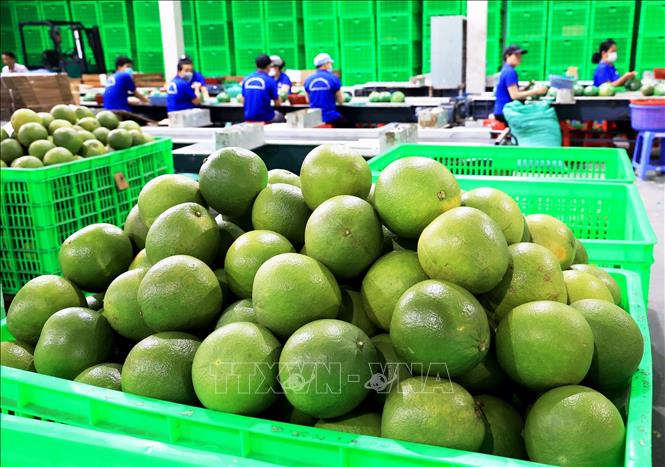HCMC – Vietnamese grapefruit has officially been approved for export to Australia, becoming the sixth Vietnamese fruit allowed into the market after dragon fruit, mango, lychee, longan and passion fruit.
The approval followed nearly two years of strict pest risk assessments, field inspections, and sample analyses conducted by both countries, according to the Government news website (baochinhphu.vn)
The Plant Protection Department said grapefruit for export must be intact, free from 19 regulated pests, and sourced from registered growing areas. The fruit must also be packaged, labeled, and irradiated at a minimum dose of 150 Gy at approved facilities. Before issuance of phytosanitary certificates, Vietnamese authorities will randomly inspect 600 fruits per batch. Upon arrival in Australia, shipments will undergo additional checks and monitoring.
Deputy Minister of Agriculture and Environment Hoang Trung described the move as a significant milestone, highlighting Vietnam’s growing credibility and management capacity in plant quarantine. He added that the approval reflects Vietnam’s readiness to integrate into global markets and expand access to high-value destinations.
Vietnam currently exports grapefruit to 14 countries and territories, including the U.S., South Korea, and New Zealand. The country has over 100,000 hectares of grapefruit cultivation, producing nearly one million tons annually. Export turnover reached about US$60 million last year, though officials believe the sector holds greater potential due to year-round harvests and competitive production costs.
In a reciprocal move, Australia has also begun exporting blueberries to Vietnam, marking a new step in agricultural cooperation between the two countries. Both sides are now exploring the exchange of additional fruit varieties and expanding collaboration in quarantine, irradiation, and agricultural trade, aiming to build a more sustainable and reliable supply chain.









